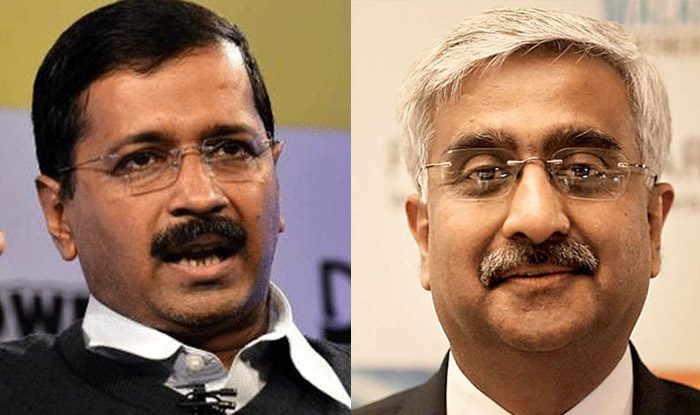Reading Time: 3 minutes
There has been constant trouble between the BJP-led government at the Centre and Arvind Kejriwal’s Aam Aadmi Party government. This is not to justify the midnight drama at Kejriwal’s residence wherein in the presence of the Chief Minister, the Chief Secretary was reportedly roughed up. This is, perhaps, the first instance of this type and needs to be condemned and dealt with firmly. Here’s a report, for Different Truths.
Delhi’s unique position as the union capital, under the Constitution, has led to constant tension between the Centre and the state government. If the governments at the two centres of power are of the same party, there is less bickering. In the event, however, of two different political parties ruling the Centre and Delhi, there is bound to be trouble, as in the present case. There has been constant trouble between the BJP-led government at the Centre and Arvind Kejriwal’s Aam Aadmi Party government. This is not to justify the midnight drama at Kejriwal’s residence wherein in the presence of the Chief Minister, the Chief Secretary was reportedly roughed up. This is, perhaps, the first instance of this type and needs to be condemned and dealt with firmly.
Delhi has a unique position under Article 239AA — it has an elected government but without many of the powers, other state governments enjoy. This makes Delhi’s government far more dependent on the Centre’s cooperation. The special position demands, therefore, that Delhi’s government shows both the willingness and the skill to negotiate, especially with a seemingly unfriendly Centre. There has been constant conflict between the centre and Kejriwal dispensation with the APP accusing the BJP-led union government of not allowing it to work.
Now coming to the shameful incident at Kejriwal’s house. Why should the CM summon Chief Secretary, Anshu Prakash, at midnight at his residence? There was no tearing hurry or emergency that CS be woken up late in the night. The AAP claims its MLAs wanted to discuss “non-disbursal of rations” — yet Food and Civil Supplies Minister Imran Hussain was not present. According to CS’s version, the meeting was held to discuss government’s publicity programme on its achievements in three years. These were not so important that CS be summoned at midnight.
The Chief Secretary is not an ordinary bureaucrat. He is head of the civil administration in the state or union territory, an officer who represents not just his own service but all services within the civil administration. His word in sorting out contending arguments and dissension among officers is final. It is his duty to run an efficient administration and give the CM fair and impartial advice. It is not for nothing that CS has a commanding presence in the administration.
In Delhi, the CS has an even more challenging role — he has to report simultaneously to the CM and the lieutenant governor and walk a tightrope between the vision and concerns of both, even when they are not always on the same page. To do this every day is not easy, but because of the immense authority vested in CS to organise and get things done, it is not impossible either. But it will work as long as both the CM and the LG understand and respect the role of CS. If that is whittled down, the tremors will be felt across the official brotherhood.
Delhi is different in many ways. In other states, the CS is invariably the choice if the CM and there is understanding and mutual trust between them. If the CS is unbending or difficult, it is easy to make a change quietly. In the UT cadre, that is not so.
By and large, the Ministry of Home Affairs — the authority controlling the cadres, serving the NCT of Delhi, as well as Goa, Arunachal Pradesh, Mizoram, Daman and Diu, Puducherry, Chandigarh and Andaman and Nicobar — does not stand in the way of CM having a CS of his choice. The officer knows that his career is largely to be decided by MHA and not by CM of Delhi or elsewhere. It is not, therefore, necessary for the CS to always find a way to meet the demands of CM, which is a point of differences with other state cadres. CMs recognise this and make the best use of what they have been given.
Former Delhi CM Sheila Dikshit and the then LG Vijay Kapoor — one a Congress CM and other an appointee of the NDA government—succeeded in bringing the unit area of house tax, the new Co-operative Societies ACT, constructed 42 flyovers and privatization of power sector despite standoffs and differences. The system, then and now, is far from ideal. But all said and done Delhi will continue to be the seat of the Central Government unless the capital of India is re-located. This may never happen and NCT of Delhi will be governed in the truncated manner.
What happened at Kejriwal’s house was an administrative breakdown and must be a tide over for the sake of people of Delhi.
The AAP and the Centre have been at loggerheads over Delhi’s administration and even moved the courts over the issue. This shows how vicious Centre-State relations have become in this country. All this is seriously hampering the governance of Delhi.
Harihar Swarup
©IPA Service
Photo from the Internet
#GovernanceOfDelhi #NDA #AamadmiParty #BJP #ChiefMinister #IPA #DifferentTruths















